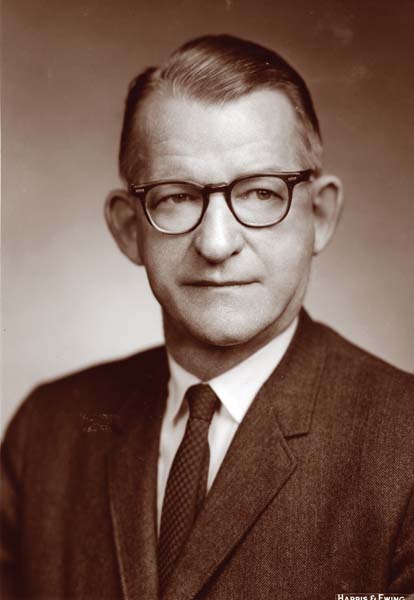John A. Sanderson

© Photograph by Harris and Ewing, Washington, DC, courtesy AIP Emilio Segrè Visual Archives, Physics Today Collection
John Adolph Sanderson, born in Vardaman, M.S., received an A.B. from the University of Mississippi in 1928 and an A.M. from the same institution in 1929. He became a teaching fellow in physics at the university and later an instructor in physics and astronomy.
After graduating from Johns Hopkins University 1933 with a Ph.D. in physics, specializing in optics, Sanderson remained at the university for two years as an instructor in physics and astronomy.
In 1935 Sanderson joined the physical optics division (later the optics division) of the U.S. Naval Research Laboratory (NRL) in Washington, D.C. At NRL he worked on a variety of problems in optics, and was initially involved in photoelastic research related to stress distribution around hatches on steel decks. He worked extensively on the optical properties of thin films, and was instrumental in having the Navy adopt procedures for producing anti-reflecting optical elements by the evaporation of metal-fluorides.
Sanderson made some of the first measurements of IR penetration through smokes and natural aerosols, and started IR spectroscopy at NRL. He was a pioneer in the use of the General Motors, low impedance, low voltage, mechanical breaker amplifier for outdoor radiometric studies, and addressed the problem of reducing heat radiation in ships’ boiler rooms by controlling IR emissivity of hot pipes, making significant contributions to the problem of IR countermeasures for ships.
Sanderson’s work led to participation in the measurement of thermal radiation from nuclear weapons tests at Bikini Atoll. Later, as superintendent of the Optics Division, a position he accepted in 1950, Sanderson oversaw and participated in a large NRL program on optical measurements of nuclear explosions.
Throughout his career, through positions as branch head, division superintendent, and associate director, Sanderson maintained his interest in military IR problems and served as a key Navy and DoD source of information and analysis in this area.
Sanderson served on the OSA Board of Directors and represented the Society on the Board of Directors of the American Institute of Physics (AIP). He also served on numerous AIP committees.
When Sanderson retired from NRL in 1965 he accepted a position with OSA as research and education director, a staff position that grew out of an OSA program instituted to strengthen the field of optics. He served in this position for five years, making a concerted effort to acquaint the faculties of colleges and universities with the opportunities for research and instruction in optics, as well as to apprise students of career opportunities in optics.
As OSA’s research and education director Sanderson also developed a research and education newsletter that circulated to all academic departments with activities in optics and physics; sponsored numerous conferences and workshops on research opportunities; and published resource letters on special optics topics.
In 1971 Sanderson retired and later moved to Clemson, S.C. where he died on 11 February 1998.
Document Created: 26 Jul 2023
Last Updated: 28 Aug 2023
